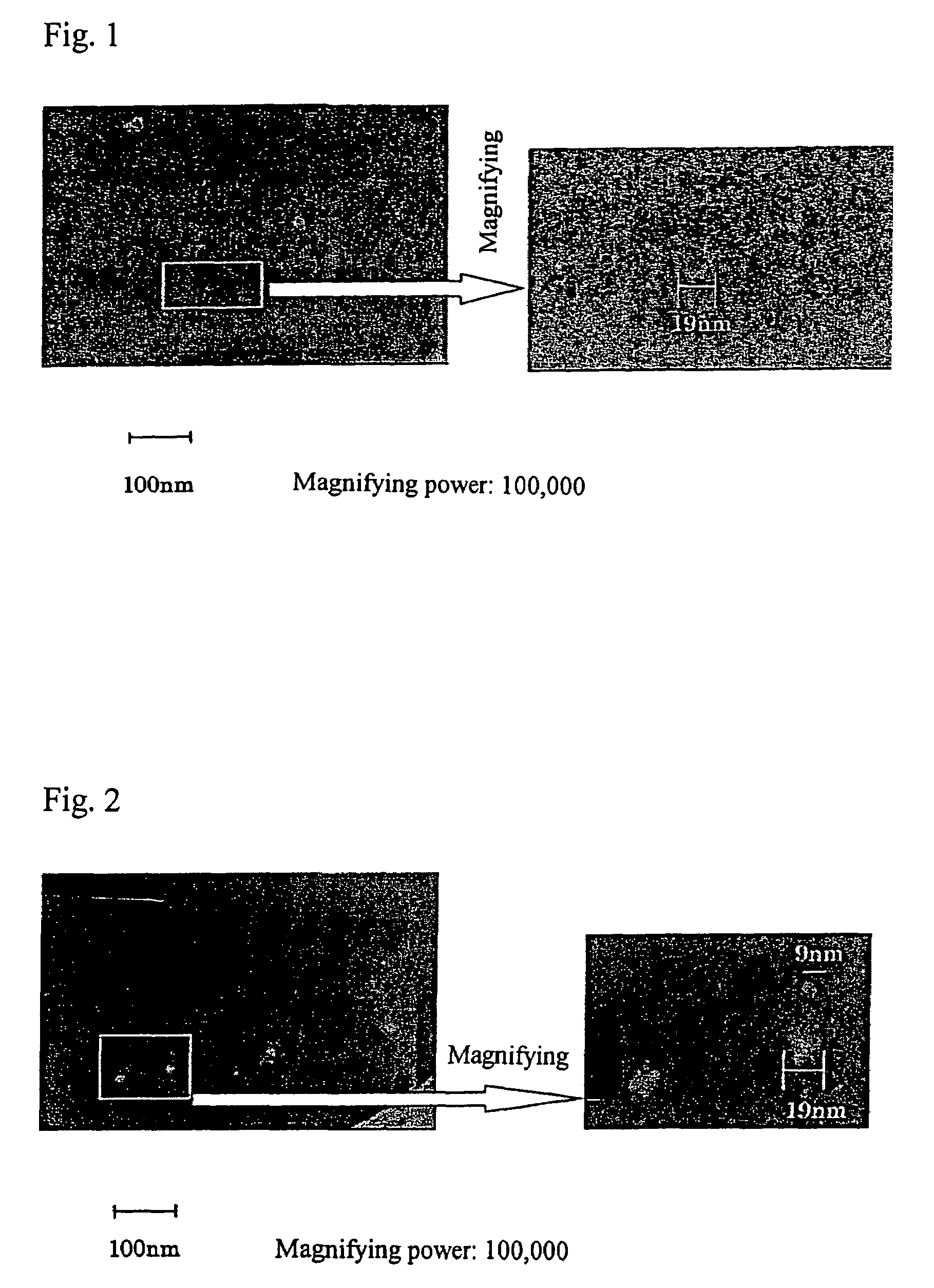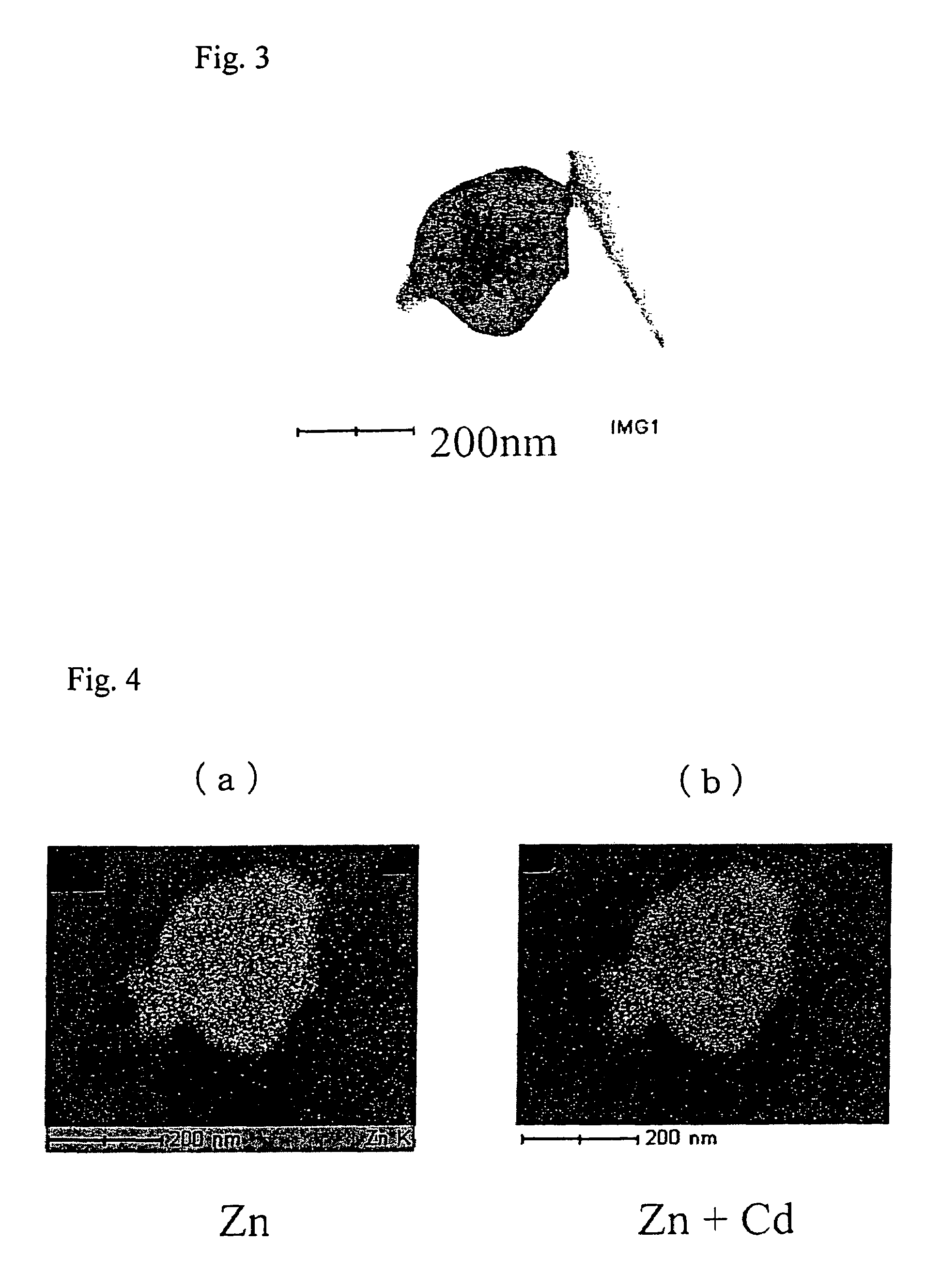Compound semiconductor particles and production process therefor
a technology of semiconductor particles and production processes, applied in the field of compound semiconductor particles, can solve the problems of insufficient performance, lack of heat resistance, and easy oxidation of the surface of the surface of the semiconductor particles, and achieve the effects of excellent performance, extreme ease, and good productivity
- Summary
- Abstract
- Description
- Claims
- Application Information
AI Technical Summary
Benefits of technology
Problems solved by technology
Method used
Image
Examples
example 1
[0195]A stainless-steel (SUS316)-made pot of 120 mL in capacity was charged with 270 parts of stainless-steel (SUS316)-made balls having a diameter of 3.18 mmφ (as balls for polish-pulverization), 13 parts of CdSe (as the compound semiconductor), and 4 parts of heptane (as the solvent), and then the pot was tightly shut. Incidentally, the pot as used was the shape of a column having a sectional diameter of 50 mm, and its bottom had a curved semispherical face having a radius of curvature of 25 mm and being convex outward of the pot.
[0196]This pot was set to a ball mill apparatus to make revolution at a set revolution rate of the pot of 298 rpm and a set revolution rate of the disk of 139 rpm for 80 hours, thus carrying out the polish-pulverization (hereinafter referred to as polish-pulverization treatment).
[0197]After the polish-pulverization treatment, there was obtained a dispersion (1a) of compound semiconductor particles by filtrating the contents as obtained in the pot. As a re...
example 2
[0199]The same pot as used in Example 1 was charged with 65 parts of stainless-steel (SUS316)-made balls having a diameter of 5 mmφ (as balls for polish-pulverization), 5 parts of CdSe (as the compound semiconductor), and 3 parts of methanol (as the solvent), and then the pot was tightly shut.
[0200]This pot was set to a ball mill apparatus to make revolution at a set revolution rate of the pot of 229 rpm and a set revolution rate of the disk of 107 rpm for 40 hours, thus carrying out the polish-pulverization treatment.
[0201]After the above treatment (revolution for 40 hours), there were taken out the stainless-steel (SUS316)-made balls for the polish-pulverization having a diameter of 5 mmφ, and then instead thereof stainless-steel (SUS316)-made balls for polish-pulverization having a diameter of 3 mmφ were charged into the pot. Then, the revolution was made for 52 hours under the same revolution rate conditions as of the preceding treatment, thus carrying out the polish-pulverizati...
example 3
[0204]There was obtained a dispersion (3a) of compound semiconductor particles in the same way as of Example 2 except to replace the 5 parts of CdSe with 5 parts of ZnS. As a result of observation of the dispersion (3a) with a TEM, it was confirmed that fine ZnS particles (compound semiconductor particles) having an average particle diameter of 0.03 μm were formed in the dispersion (3a) wherein a portion of the ZnS particles were fine ZnS particles having particle diameters of not larger than 10 nm.
PUM
| Property | Measurement | Unit |
|---|---|---|
| particle diameters | aaaaa | aaaaa |
| particle diameters | aaaaa | aaaaa |
| particle diameters | aaaaa | aaaaa |
Abstract
Description
Claims
Application Information
 Login to View More
Login to View More - R&D
- Intellectual Property
- Life Sciences
- Materials
- Tech Scout
- Unparalleled Data Quality
- Higher Quality Content
- 60% Fewer Hallucinations
Browse by: Latest US Patents, China's latest patents, Technical Efficacy Thesaurus, Application Domain, Technology Topic, Popular Technical Reports.
© 2025 PatSnap. All rights reserved.Legal|Privacy policy|Modern Slavery Act Transparency Statement|Sitemap|About US| Contact US: help@patsnap.com



